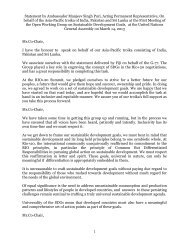STATE OF THE WORLD'S CITIES 2012/2013 Prosperity
STATE OF THE WORLD'S CITIES 2012/2013 Prosperity
STATE OF THE WORLD'S CITIES 2012/2013 Prosperity
You also want an ePaper? Increase the reach of your titles
YUMPU automatically turns print PDFs into web optimized ePapers that Google loves.
uilding codes to support urban reforms, not to mention<br />
squatter regulation and slum upgrading. On top of that,<br />
cities today must provide accommodative measures, allowing<br />
for progressive construction, smaller plot sizes and multiple<br />
variants of land tenure. Similarly, utility standards must be<br />
adjusted, and new development financing channels devised,<br />
in the face of inequity and exclusion.<br />
INSTITUTIONAL TRANSFORMATION<br />
Some of the real-life experiences outlined in this chapter<br />
suggest that when it comes to structuring the urban power<br />
functions that form the hub of the ‘prosperity wheel’, it<br />
is for every city to make its own choices. Indeed, many<br />
choices have already been made; but common to all is the<br />
adaptation and consolidation of key institutions which<br />
harness the energy and engagement of all stakeholders in<br />
a city. Major stakeholders, such as business, professionals,<br />
civic organisations, besides neighbourhood associations,<br />
must be provided with an institutional avenue for effective<br />
engagement with urban prosperity – how it is generated<br />
and how it is shared. Such engagement transcends the<br />
traditional participatory practices of forums and consultative<br />
Box 3.2.4<br />
Law, institutions and the public interest<br />
Urban space is shaped by laws, rules and institutions (or lack<br />
thereof) in response to the needs and requirements of varying<br />
numbers of stakeholders. In this sense, the prosperity of a city<br />
is also a legal and institutional construct, and the past has some<br />
lessons for early 21st century central and municipal governments.<br />
Major legal systems around the world have long recognised that<br />
far from being just an abstract norm, law and institutions have the<br />
capacity to shape up a variety of interests across ethnic, cultural<br />
and other divides. They do so within the spatial confines of their<br />
jurisdictions, and with a long-term view. 61<br />
This is the background against which the state has historically<br />
emerged as the apex body of an interdependent network of<br />
powerful repositories of different kinds of power – legal, religious,<br />
bureaucratic, economic, etc. 62 In this role, the state has gradually<br />
built a monopoly over universality. This went hand in hand with the<br />
constitution of bureaucratic functions independent of particular<br />
interests – family, religion, the economy – with agents that were<br />
mandated to embody the public interest. Along with this came the<br />
constitution of a new, “public” kind of resources that embodied<br />
universality, or at any rate a degree of universality that was superior<br />
to that of previously existing resources. This public realm gradually<br />
stood out against particular interests, and also against private<br />
appropriation of public functions through patronage or nepotism.<br />
Innovating to Support the Transition to the City of the 21st Century<br />
119<br />
FACT<br />
POLICy<br />
As some cities have found out, shared prosperity involves<br />
a serious review of regulatory frameworks.<br />
As some cities have come to realise, shared and<br />
integrated prosperity is a socio-political project,<br />
involving a commitment by all stakeholders and entailing a<br />
re-examination of laws, regulations, and the corresponding<br />
institutional framework.<br />
mechanisms; it turns socioeconomic conditions into levers<br />
of enhanced prosperity, with every household and business<br />
considered as an asset to be safeguarded, optimized and<br />
promoted – empowered – for the benefit of all<br />
An exemplary case of institutional innovation for shared<br />
prosperity is that of Medellín. During the past decade,<br />
the Colombian city’s prosperity has experienced major<br />
turnaround, as it endeavoured to overcome the combined<br />
challenges of poverty, inequality, exclusion and informality,<br />
besides rampant violence, through a whole new social<br />
As the state evolved into “the geometric focal point of all<br />
perspectives” and a principle of public order, it established a<br />
unified space – imposing spatial over social, genealogical or other<br />
types of proximity. In the process, public authority has gained<br />
more recognition from the various segments of society, which<br />
further consolidates both its privileged position and its efficiency.<br />
As a result, the notion of “public interest” can pave the way for<br />
consensus and mobilization; at any rate, it sheds light on reality<br />
and becomes a shared evaluation criterion.<br />
Historically, in China as in Europe, the city has served as the<br />
privileged locus of the emergence of the state and the public<br />
interest as we know them today. In 11th century Western<br />
Europe 63 , it fell to municipal authorities to control violence as<br />
well as economic and political relations. Although the poor were<br />
effectively left out of some functions, they were equal members<br />
of the assemblies in charge of endorsing municipal officials and<br />
laws (including those on economic activities). Moreover, purchase,<br />
sale and mortgaging of land and buildings were open to all. At the<br />
time, the protections and safeguards provided by cities also aimed<br />
at preserving their prosperity from heavy-handed monarchs or<br />
emperors.


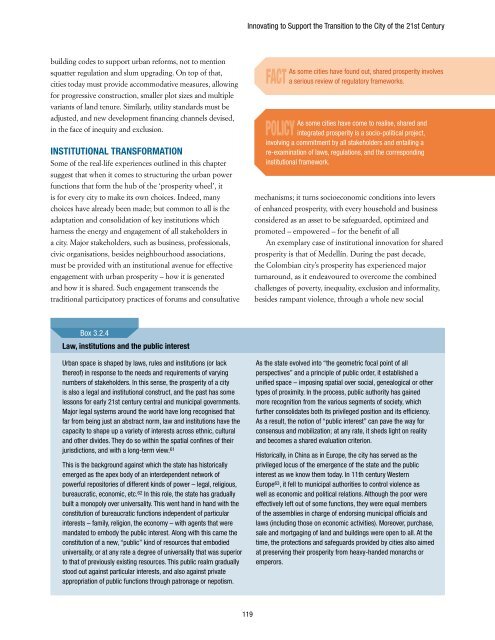

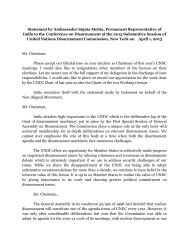
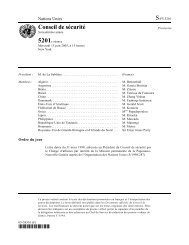
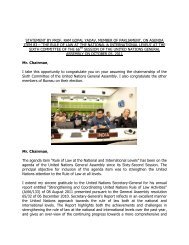
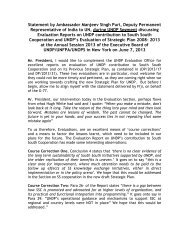
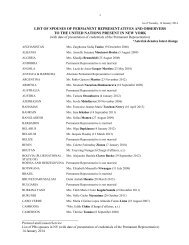
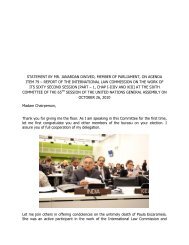

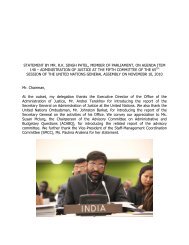

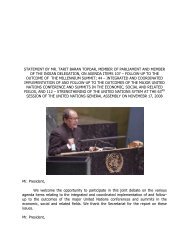
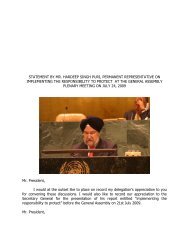
![1 statement by dr.[mrs] kakoli ghosh dastidar - Member States Portal](https://img.yumpu.com/27526598/1/190x245/1-statement-by-drmrs-kakoli-ghosh-dastidar-member-states-portal.jpg?quality=85)
